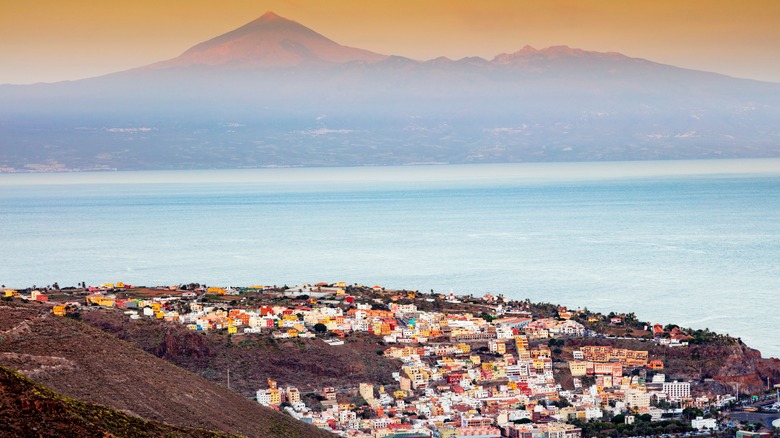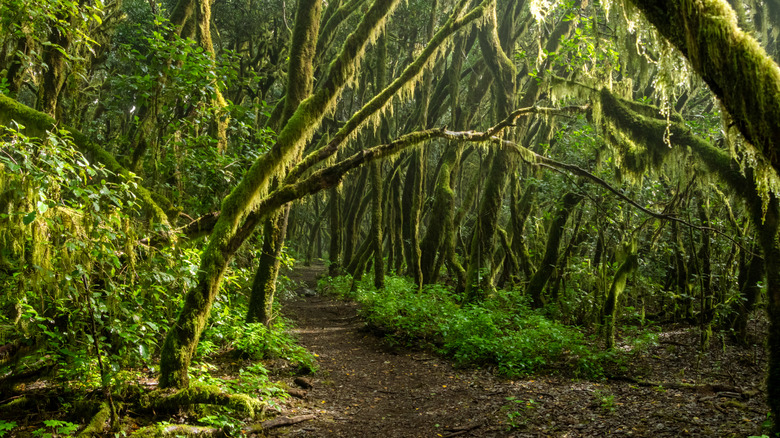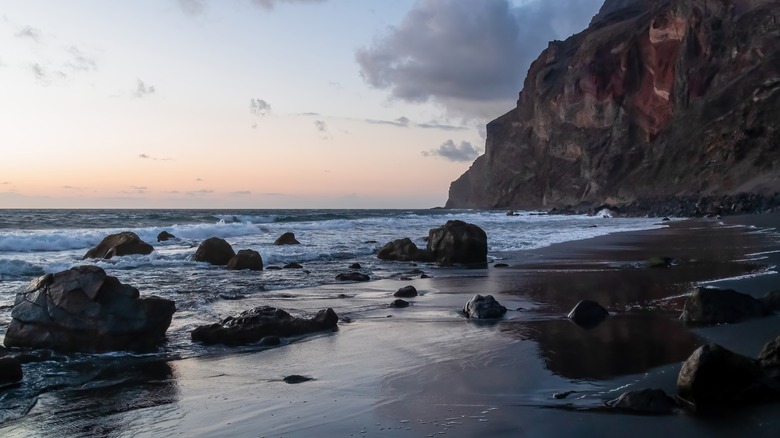One Of The Least-Visited Canary Islands Boasts Pristine Beaches And Tropical Forests Without Crowds
Located off the coast of Morocco, the southernmost islands in Spain are also one of the most popular tropical getaways for vacationing Europeans. Offering sun, black sand beaches, and an impressive volcano that draws in hikers, the Canary Islands have hundreds of hotels and resorts catering to every kind of tourist. However, more intrepid travelers may dare to venture farther to La Gomera, where there are fewer crowds, a dense subtropical forest, and the linguistic intrigue of one of the world's rare whistling languages.
This undeniably magical island isn't the easiest to get to. There are non-stop flights from Europe and North America to the Canary Islands, but if you're flying to La Gomera you'll need to add on a connecting flight from Tenerife or Gran Canaria. Alternatively, you could take a direct ferry from either Tenerife or La Palma. If you want to make sure your time is spread evenly throughout the archipelago, you could also book a cruise that stops in La Gomera, which is the best way to explore the Canary Islands.
However, with a few days in La Gomera, you can really make your way through the most beautiful trails of the national park and the rugged cliffside walks, from which you may be able to spot whales breaching out in the ocean or perhaps hear the sound of the Silbo language being carried along by the wind.
Exploring La Gomera's wild side
La Gomera has a few good beaches, such as family-friendly La Calera or the black sands of La Negra, but this is the rare kind of island where travelers come more for the interior than the coast. The UNESCO-recognized Garajonay National Park is famous for its foggy laurel forest with an enigmatic aura. You can get a sense of these misty woodlands on short beginner-friendly loops like the two-mile Cañada de Jorge Trail, or head straight for the summit of the park, and the highest point on the island, on the top-rated six-mile route from Laguna Grande to Alto de Garajonay. If you prefer a view of the sea, you can choose among the many segments of the Camino Natural, which completes a circle around the whole island.
Not just for hiking, you also shouldn't miss out on the many great opportunities for marine life spotting while visiting La Gomera, which is home to a variety of dolphin and whale species. These whale-watching tours usually leave from Valles Gran Rey, but you could also book a snorkeling or diving excursion with Splash Gomera in Playa de Santiago. A boat trip is also the only way to see Los Órganos, the extremely impressive and beautiful 80-meter high and 200-meter wide basalt columns that resemble a giant organ made out of stone.
Discovering Silbo and other travel tips for La Gomera
There is a lot of natural beauty to absorb in La Gomera, but that doesn't mean you should lose sight of its fascinating culture. One of the most unique things about this island is Silbo, an ancient language that uses whistles instead of words. Believed to have developed among islanders in order to communicate across the deep ravines and wide valleys of the island, it is still practiced today by about 20,000 whistlers, and it is even taught in school. There is no specific place on the island to hear a live demonstration of Silbo, but if you get lucky and ask nicely, a few locals might be willing to share their skills.
Before you can plan your itinerary for your La Gomera trip, you'll need to pick a homebase in either Valle Gran Rey, San Sebastián de la Gomera, or Hermigua, which have some of the best hotels on the island, such as the historic Parador de la Gomera. It's possible to get around without a vehicle and take advantage of bus lines, but if you don't have a lot of time, a rental car is the best way to get around to the different towns, beaches, viewpoints, and trailheads.


